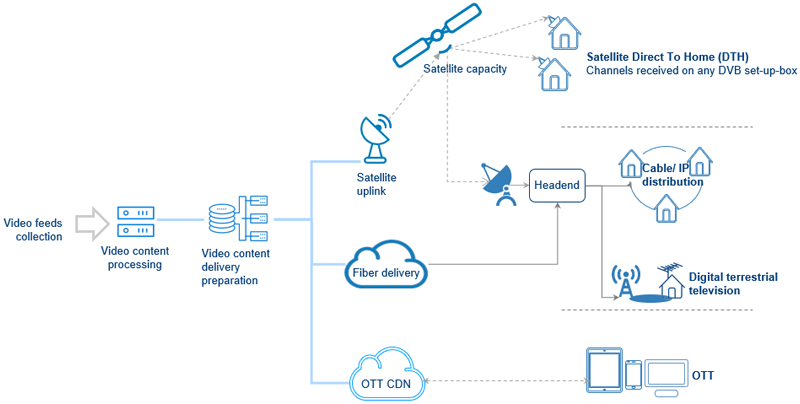9 Simple Techniques For Apollo Group Tv
9 Simple Techniques For Apollo Group Tv
Blog Article
Not known Factual Statements About Apollo Group Tv
Table of ContentsApollo Group Tv for DummiesThe Basic Principles Of Apollo Group Tv The Definitive Guide for Apollo Group TvNot known Details About Apollo Group Tv
In this circumstance, rather than having three-minute industrial areas during a 30-minute television program, TV shows might transform to one where a customer will be required to have a regular monthly registration, so that they cen sight targeted banner advertisements. This kind of advertising and marketing currently happens on the web, and the quantity of information tv firms gather allows them to do similar.Describe the major trends amongst the broadcasting and cord networks. Popular radio reveals such as authorities drama Dragnet and western cowboy collection Gunsmoke were adjusted for tv, and brand-new Television shows were sponsored by single advertisers, just as radio shows had actually been.
Today, the tv industry is much more complicated. Programs are sponsored by multiple marketers; programming is controlled by major media corporations; and the 3 major networks no longer control the airwaves but rather share their viewers with numerous wire channels. Numerous variables represent these patterns within the sector, consisting of technological developments, government policies, and the development of new networks.

The 5-Minute Rule for Apollo Group Tv
Developed in 1969, (PBS) created out of a record by the Carnegie Compensation on Educational Television, which checked out the role of educational, noncommercial television on culture. Public tv was additionally intended to offer global accessibility to television for visitors in rural locations or viewers that might not pay for to pay for private tv solutions.
The period in between 1950 and 1970 is traditionally acknowledged as the. Apart from a tiny portion of airtime managed by public tv, the three significant networks (referred to as the Big Three) dominated the tv industry, jointly accounting for more than 95 percent of prime-time viewing. In 1986, Rupert Murdoch, the head of multinational company Information Corp, launched the Fox network, testing the supremacy of the Big Three.
Targeting young and minority target markets with shows such as Buffy the Vampire Slayer, Moesha, Dawson's Creek, and The Wayans Bros., the new networks intended to draw terminals far from their old network affiliations. However, instead than repeating the success of Fox, UPN and WB battled to make an influence. Not able to draw in numerous affiliate terminals, both fledgling networks got to less homes than their bigger competitors due to the fact that they were inaccessible in some smaller sized cities.
This decision paved the method for the development of cord movie channels, adding to the exponential growth of wire in the 1980s and 1990s. apollo tv. More deregulation of cable in the 1984 Cord Communications Plan Act removed restrictions on cord prices, making it possible for drivers to bill what they desired for cable solutions as long as there worked competition to the service (a requirement that over 90 percent of all cord markets can fulfill)
Apollo Group Tv - The Facts

Having actually developed the very first "superstation," Turner expanded his world by establishing 24-hour information network CNN in 1980. At the end of the year, 28 national programming solutions were available, and the wire revolution had actually begun. Over the following years, the market underwent a period of rapid growth and popularity, and by 1994 audiences could select from 94 basic and 20 costs cable solutions.
Number 9 - http://peterjackson.mee.nu/where_i_work#c2402.16 Boosted competition from cable television channels has triggered a consistent decrease in the networks' audience rankings. During the 1950s, the expense of creating a single television program enhanced as programs came to be much longer and production costs soared. Sponsorship on network tv moved from solitary sponsorship, in which a program was completely sustained and generated official source by one marketer, to numerous sponsorship, in which marketers got 1- or 2-minute places on the program
Each feedback must be a minimum of one paragraph. Select one of the Big 4 networks and print out its regular programming timetable. Watch the network's prime-time programs throughout a week, keeping in mind the target market for every program. Observe the advertising and marketing enrollers that support each program and contrast just how the product or services fit with the designated target market.
Apollo Group Tv - An Overview

Direct TV, often referred to as typical broadcast television, encompasses cable television and satellite tv. It's called "straight" due to the fact that web content follows an established shows schedule, unlike on-demand content which the specific viewer makes a decision to watch based upon their very own choices and schedule. When you ask, "What is straight Television?", assume of it as the classic way of enjoying TV that has been around for years.
Report this page